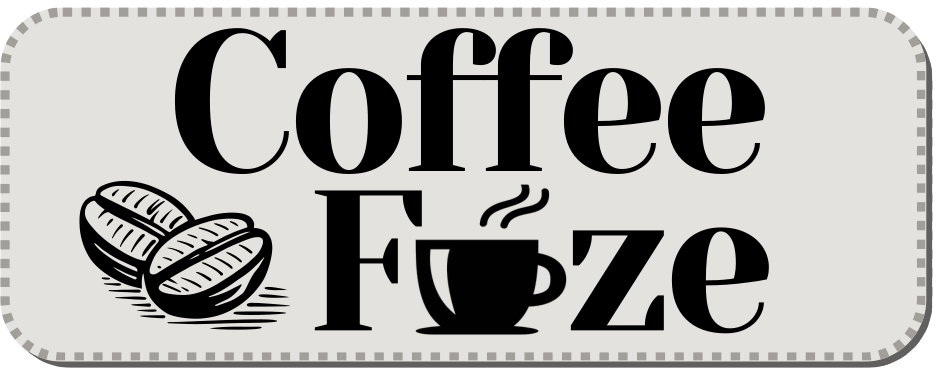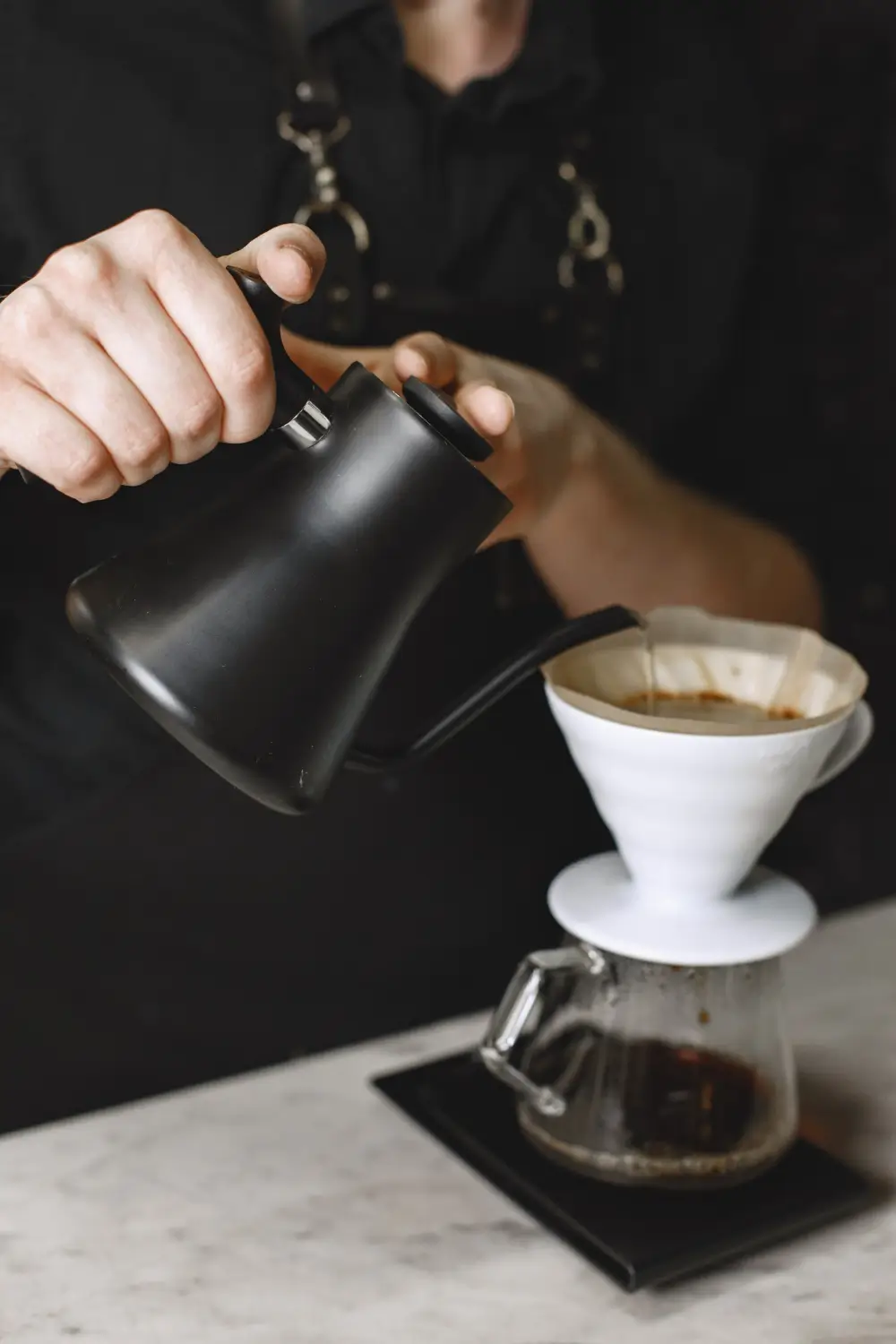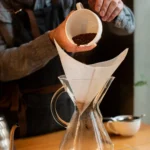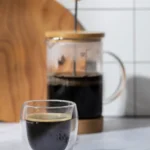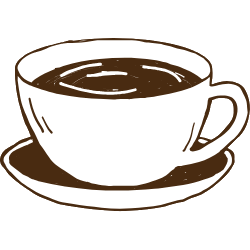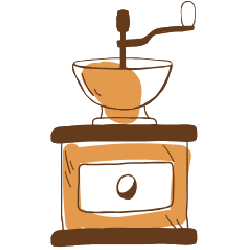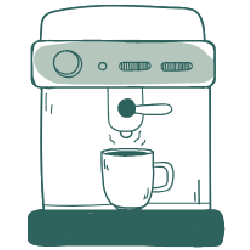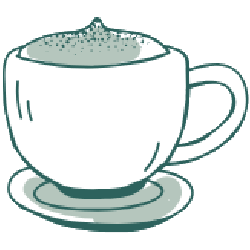Picture your ideal cup of coffee. Every flavor sings—bright citrus, rich chocolate, pure and clear. That’s pour-over coffee. It’s a manual method, beloved by many. You get precise control over the brew. You unlock nuanced flavors from your favorite beans.
What is pour-over coffee?
Pour-over coffee is a manual way to make coffee. You slowly pour hot water over coffee grounds in a filter. Gravity pulls the coffee into a mug or carafe. This method gives you great control over how the coffee brews. You adjust variables like water temperature, how fast you pour, the exact grind size, and the coffee-to-water ratio. These small changes lead to a unique cup.
You need a few key tools: a dripper, a filter, a carafe, and often a gooseneck kettle for precise pouring. The process starts with a ‘blooming’ phase. You pour a little water over the grounds. This releases trapped carbon dioxide. Then, you continue with measured pours. This careful attention helps extract the best flavors from your coffee beans.
Essential pour-over coffee equipment
You need specific tools to make great pour-over coffee. These tools give you precision and control. Each item helps extract the best flavors from your beans. Knowing why you need each piece helps you brew a consistent, delicious cup.
Gooseneck kettle
A gooseneck kettle is crucial for pour-over coffee. Its long, slender spout gives you precise control over water flow. This helps you evenly wet the coffee grounds. You avoid both over-extraction and under-extraction. Even saturation makes a balanced, flavorful cup. It directly impacts the final taste and how well the hot water works.
Digital scale
You need a digital scale for consistent pour-over coffee. It measures coffee grounds and water precisely. Accurate coffee-to-water ratio takes away guesswork. This gives you repeatable, optimal flavors. Many scales also have a timer. This helps you track brew time for even more consistency.
Pour-over brewer (dripper)
A pour-over brewer, or dripper, holds the filter and coffee grounds as you brew. Different models change how water flows and how flavors extract. Here are some popular choices:
- The Hario V60 has a large single hole and spiral ribs. It promotes fast flow and a clean cup,
- The Chemex is an elegant, hourglass-shaped brewer. It uses thicker filters for a clean, bright cup,
- The Kalita Wave has a flat bottom and three holes. This helps with more even extraction and less channeling. You get a balanced flavor,
- Other options include Melitta and Bonmac brewers. Each design impacts the brew.
Coffee grinder
A coffee grinder is essential for pour-over coffee. Freshly ground coffee makes a big difference in flavor and extraction. A good burr grinder gives you a consistent grind size. This is critical for even extraction. Uneven grinds lead to uneven brewing. You get undesirable flavors in your cup.
Filters
Filters are crucial for pour-over coffee. They separate coffee grounds from the brewed liquid. This gives you a clean cup. Paper filters are common. They trap fine particles and oils well. This makes the final brew clear and crisp. You can also use metal or cloth filters. These offer different levels of clarity and body in your coffee.
How to make pour-over coffee: A step-by-step guide
The unique flavor profile of pour-over coffee
People love pour-over coffee for its clarity and brightness. It lets subtle flavors from high-quality beans truly shine. This method highlights the natural traits of specialty coffee beans. It gives you a distinct sensory experience. Paper filters separate liquid from grounds cleanly. This greatly contributes to the unique taste.
Clarity and brightness
Pour-over coffee offers a clean, vibrant cup. Flavors are distinct, not muddled. This method brings out lively acidity. You can easily taste specific, fresh notes. For example, coffees from Ethiopia or Kenya often show strong fruity and floral notes. The pour-over method highlights these beautifully.
Taste notes and aroma
You’ll find many taste notes and aromas in pour-over coffee. These depend on the bean’s origin and roast. Common taste notes are fruity—like berries or citrus—floral, nutty—like almond or hazelnut—and chocolate. The aroma varies widely. It complements the clean flavors. It can range from sweet and delicate to robust and earthy.
Body and texture
Pour-over coffee has a light to medium body and texture. It feels crisp and refreshing in your mouth. Unlike heavier brewing methods, pour-over makes a brew free of sediment and too many oils. This gives it a clean mouthfeel. You taste nuanced flavors more clearly without a heavy coating on your tongue.
Pour-over coffee versus other brewing methods
Pour-over coffee differs from other popular brewing methods like French press and drip coffee. It has a distinct flavor, brewing technique, and level of convenience. Each method offers a unique experience. They cater to different coffee drinkers’ preferences and priorities.
Flavor and body differences
Pour-over coffee offers a distinct flavor and body compared to other methods. Pour-over makes a lighter, cleaner, more nuanced cup. The paper filter removes most coffee oils and fine particles. This lets delicate, balanced flavors emerge. It’s ideal for highlighting traits of specialty coffee beans.
A French press makes a stronger, richer, fuller-bodied brew. Its metal mesh filter lets more coffee oils and fine sediment stay in the cup. This creates an intense flavor, sometimes with a slight grittiness. Drip coffee usually extracts milder flavors than pour-over. You get less flavor complexity because of less precise control over water flow and temperature.
Brewing method differences
Pour-over coffee is a manual process. You carefully pour hot water over grounds in a paper filter. This needs your full attention and a steady hand. A gooseneck kettle helps you get even saturation and good extraction. The French press uses an immersion method. Coffee grounds steep in hot water for minutes. Then, a plunger separates them.
Drip coffee machines offer an automated or semi-automated drip process. Hot water flows through a coffee bed in a filter. However, you have less control over water flow and temperature. This limits how much you can customize the flavor.
Convenience and cleanup differences
Pour-over coffee cleanup is easy. You discard the used grounds and paper filter. Rinse the brewing vessel. However, brewing pour-over demands constant attention. You also need to buy filters continually, which creates waste.
The French press is usually more convenient during brewing. It needs less hands-on work once you combine grounds and water. French press cleanup can be a bit messier. You have wet grounds and must rinse the mesh filter. Drip coffee machines are usually the most convenient. They automate the brewing with little input from you. Cleanup varies by machine.
| Aspect | Pour-Over Coffee | French Press | Drip Coffee | ||||
|---|---|---|---|---|---|---|---|
| Flavor Profile | Light, clean, nuanced | Strong, rich, full-bodied | Similar to pour-over but milder | ||||
| Body | Lighter, less sediment | Fuller body, some grit | Medium | ||||
| Brewing Method | Manual pouring over paper filter | Immersion with metal mesh | Automatic or manual drip | ||||
| Convenience | Requires attention, filter waste | Easier, less hands-on | Most convenient/automated | Cleanup | Easy (discard paper filter) | Moderate (clean mesh filter) | Varies (depends on machine) |
Why choose pour-over coffee?
Pour-over coffee offers clear benefits. It’s for those who like precision and nuanced flavors. Its main advantage is the control you get over every brewing variable. You control water temperature, pour rate, and more. This lets you customize extraction. This precision makes flavors clearer. It highlights the unique traits of specialty coffee beans.
The paper filter gives you a clean, bright cup. It’s free of sediment and too many oils. You get a pure taste of the coffee’s natural flavor. Many coffee lovers also find the ritual of manual brewing very satisfying.
Benefits of pour-over coffee
- You get unparalleled control over every variable,
- It produces a clean, bright cup free of sediment and excessive oils,
- It highlights the unique characteristics of specialty coffee beans,
- The manual brewing process offers a satisfying ritual.
Disadvantages of pour-over coffee
- It requires more time and precision than automated methods,
- There’s a learning curve to master the technique,
- You rely on disposable filters, which creates ongoing waste.
Even with these factors, pour-over is rewarding. You can consistently brew a superior, custom-tailored cup.
Pour-over coffee is a true manual brewing art. It offers a deeply rewarding experience if you put in the time and precision. This method brings out clean, nuanced, complex flavors. It truly showcases your coffee beans’ natural qualities. Master the technique, and you gain unmatched control over your brew. From the first bloom to the final drip, you get a cup with exceptional clarity and brightness.
This coffee journey lets you find subtle taste notes. You’ll appreciate the effort behind each perfect cup. Try brewing pour-over coffee. Discover its distinct appeal. You might find your new favorite way to enjoy coffee.
